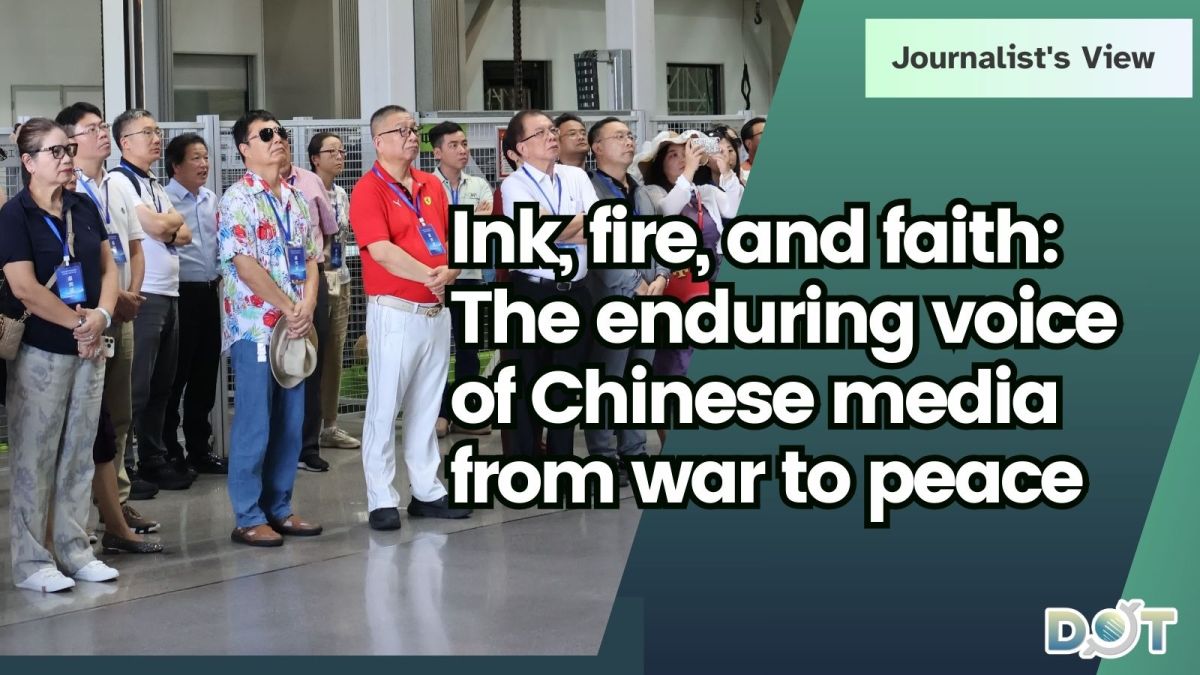
By Kevin Wang and Felicia Li
—— It was more than a reunion; it was a return to roots.
At the opening of the 15th Annual Conference of the Overseas Chinese Media Cooperation Organization, held in Changsha on August 26, over 120 senior representatives from 84 Chinese-language media outlets across 37 countries and regions came together not just to discuss strategy, but to reflect on a shared legacy — and a shared future.
This year's gathering holds special historical weight: it coincides with the 80th anniversary of the victory in the Chinese People's War of Resistance Against Japanese Aggression and the global triumph over fascism. For overseas Chinese media, the echoes of history are not distant. They are deeply personal, deeply professional.
Eighty years ago, overseas Chinese journalists were not only messengers — they were warriors in their own right. From the Nanyang correspondents who braved battlefronts, to the iconic image of Lugou Bridge captured by Ta Kung Pao's Fang Dazeng, from the rallying cry "Japan Has Surrendered!" to the special anti-Japanese editions of Malaysia's Kwong Wah Yit Poh — Chinese-language newspapers abroad held the line where bullets could not.
Their ink was their weapon. Their pages, a call to arms.
Through tireless reporting, they ignited patriotic fervor, inspired donations, and even motivated overseas students to return home and join the fight. It was a transnational, transgenerational act of defiance — and devotion.
Today, these same media organizations are wielding new tools — algorithms, mobile platforms, and AI — but their mission remains unchanged: to bridge China and the world with truth, context, and cultural depth.
"We've been reporting on China's transformation for 25 years," said Carlo Mazzanti, Director of Cina In Italia. "This organization helps amplify China's voice and lets the world see the country's achievements."
Indeed, the Global Chinese Media Cooperation Organization is more than a professional alliance — it is a cultural force, shaped by history and sharpened by new realities.
From August 26 to 30, delegates are visiting Changsha, Yueyang, Zhangjiajie, and other key cities in Hunan to observe firsthand the province's economic vitality, cultural heritage, and social development. At their first stop — heavy equipment giant Zoomlion — delegates marveled at the scale and sophistication of China's manufacturing, snapping photos beside massive excavators under the summer sun.
From the oil-stained presses of wartime newspapers to the touchscreen interfaces of today's newsrooms, overseas Chinese media have always stood at the intersection of memory and mission. They are not only witnesses to China's rise, but also shapers of how that rise is understood — across languages, across cultures, across continents.
"Overseas Chinese media are a spiritual bridge connecting the global diaspora with the homeland," one delegate noted. "Our task is not just to report, but to resonate."
In a world of fractured narratives and cultural misunderstanding, this resonance matters. It is not about propaganda. It is about perspective — offering stories that are nuanced, human, and rooted in a shared cultural DNA.
Today's headlines may no longer be hand-set in lead type, but the spirit of those early wartime journalists lives on.
They shouted truth into the void.
Today's Chinese media whispers understanding into the noise.
And that, perhaps, is the most powerful echo of all.




















Comment